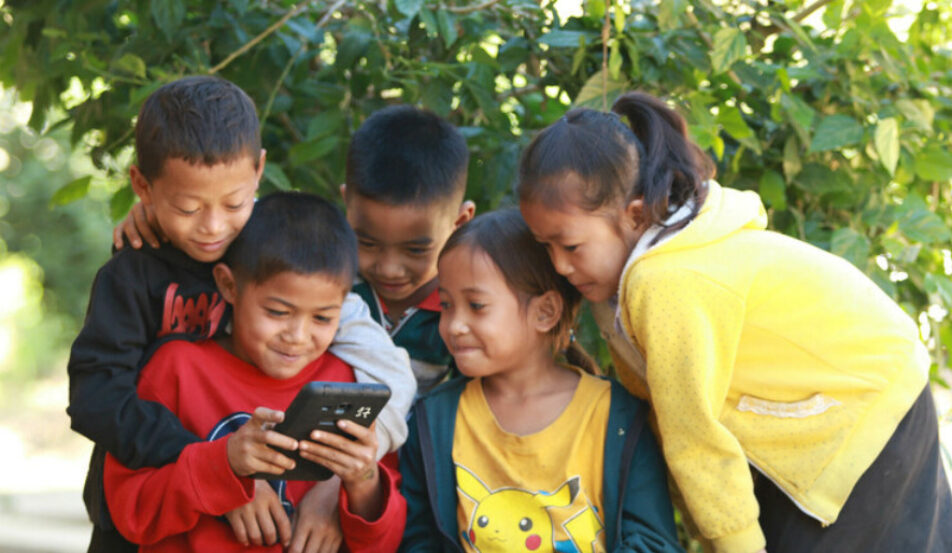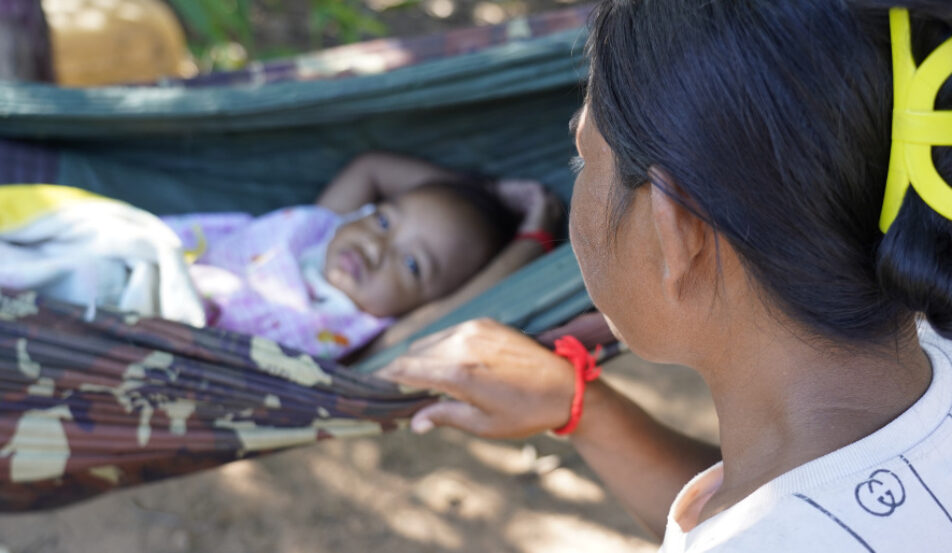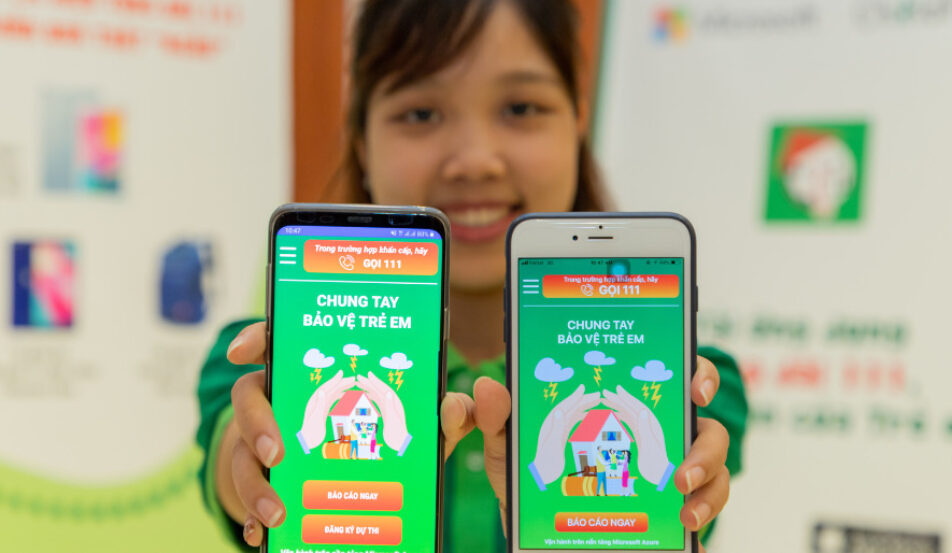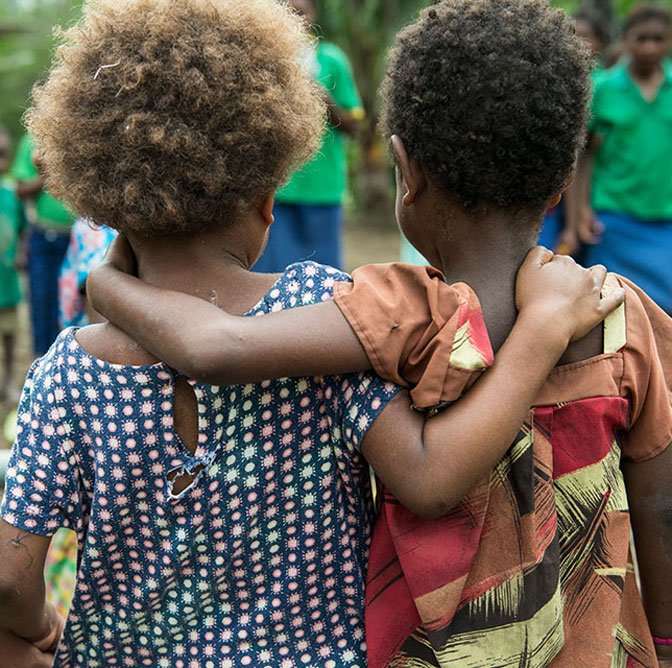Why children must be involved in disaster risk reduction
13 October is the International Day for Disaster Reduction, a day to highlight how communities around the world are reducing their risk to disasters. This year`s theme is ˜Living with disability and disasters`.
We learned a very good lesson from the recent Horn of Africa drought. When I first visited the Turkana region of Kenya during ChildFund`s emergency response, I didn`t see any children with disability or any parents with disability and I was a bit curious. Our reports said there was no person or child with disability found in that area, which we knew wasn`t right, because it`s globally accepted and proven that 10-20% of the population is disabled in some way or another.
We sent another evaluation team and what we found was amazing, people tend to hide children with disability and they are not able to participate in any of the decision-making processes or in the relief activities. They cannot come and get their relief items or food directly from the centres. So there`s a whole lot of social stigma and negative cultural practices associated with disability.
In a world where the number of disasters occurring has increased exponentially, and where children, particularly those living with disability, are the most vulnerable, this is significant. In the last decade, disasters affected an estimated 67 million children around the world each year. Conservative estimates suggest that over 7 million of these children experience various forms of disability, and millions more may acquire disabilities as a result of increasingly frequent and intense disaster activity.
Disasters are also an issue that children are concerned about. In 2012, ChildFund`s global children`s survey, Small Voices Big Dreams, found close to a quarter of children in developing countries (23%) named natural disasters as the environmental problem they worry most about (second only to pollution), with 40% having experienced drought, 33% flood and 30% forest or bushfire.
I have seen firsthand the difference that disaster risk reduction (DRR) measures can make. In my country, Bangladesh, we are very disaster prone yet we started to take DRR seriously from last decade. I give a presentation which shows a comparison between three cyclones of the same intensity and what kind of impact they had over time €“ from 300,000 people killed during Cyclone Bhola in 1971 to just 300 killed by Cyclone Sidr in 2010.
There are studies that show appropriate risk reduction measures helped to reduce these numbers. For example, in Bangladesh, we have one of the largest cyclone preparedness projects, run by the Red Cross and Red Crescent. They follow simple procedures and rules, which involves getting early warning information through local radios and clubs, and disseminating that information to the local community through megaphones, flags and other mechanisms. The government also helps these activities by building safe cyclone shelters so people have somewhere to go.
While we can`t stop disasters from happening, we can reduce their impact by taking such precautionary steps before they occur. The implementation of disaster risk reduction measures is vital if communities are to have the skills and knowledge to minimise injury and loss during an emergency. ChildFund has found that children may often have different perceptions of hazards compared to adults, so it is essential that young people are given the opportunity to be actively involved in the creation of their own community disaster risk plans.
One way to establish a sense of control and to build confidence in children before a disaster is to raise their understanding of hazards, the impact of hazards and provide life-saving programs, such as free swimming lessons. At the same time it is important that communities increase their knowledge and awareness about the importance of protecting children from disastrous events, such as how to take care of children during floods, as well as improve community emergency preparation and planning.
ChildFund Australia is working to ensure that disaster risk reduction plans, known as Community Action Plans, are in place in all communities where we work. These plans will be developed in a participatory manner, consistent with the Hyogo Framework for Action, and according to relevant guidelines in each country.
In November I`m going with a technical team to three communities in Laos to see exactly how this is working in practice. We will be looking specifically to see whether vulnerable people, including children with disability, are being included in the discussion process.
ChildFund Australia has also initiated and is now co-chairing (with Save the Children) the ACFID Disaster Risk Reduction Working Group. This is a new peak body for DRR for Australian aid and development organisations. We learn from each other, we look at the root causes of risk worldwide and what our role should be to reduce this, and then we take advocacy positions to promote DRR in the national and global agendas.
I think we are in a better position than we were 10 years back. There are still improvements to be made but people are beginning to understand the importance of this work. I enjoy being involved in risk reduction and preparedness because you can see how it will make a difference over the longer term, how it will save lives, reduce suffering and retain the development work and achievements that have been made so far.






